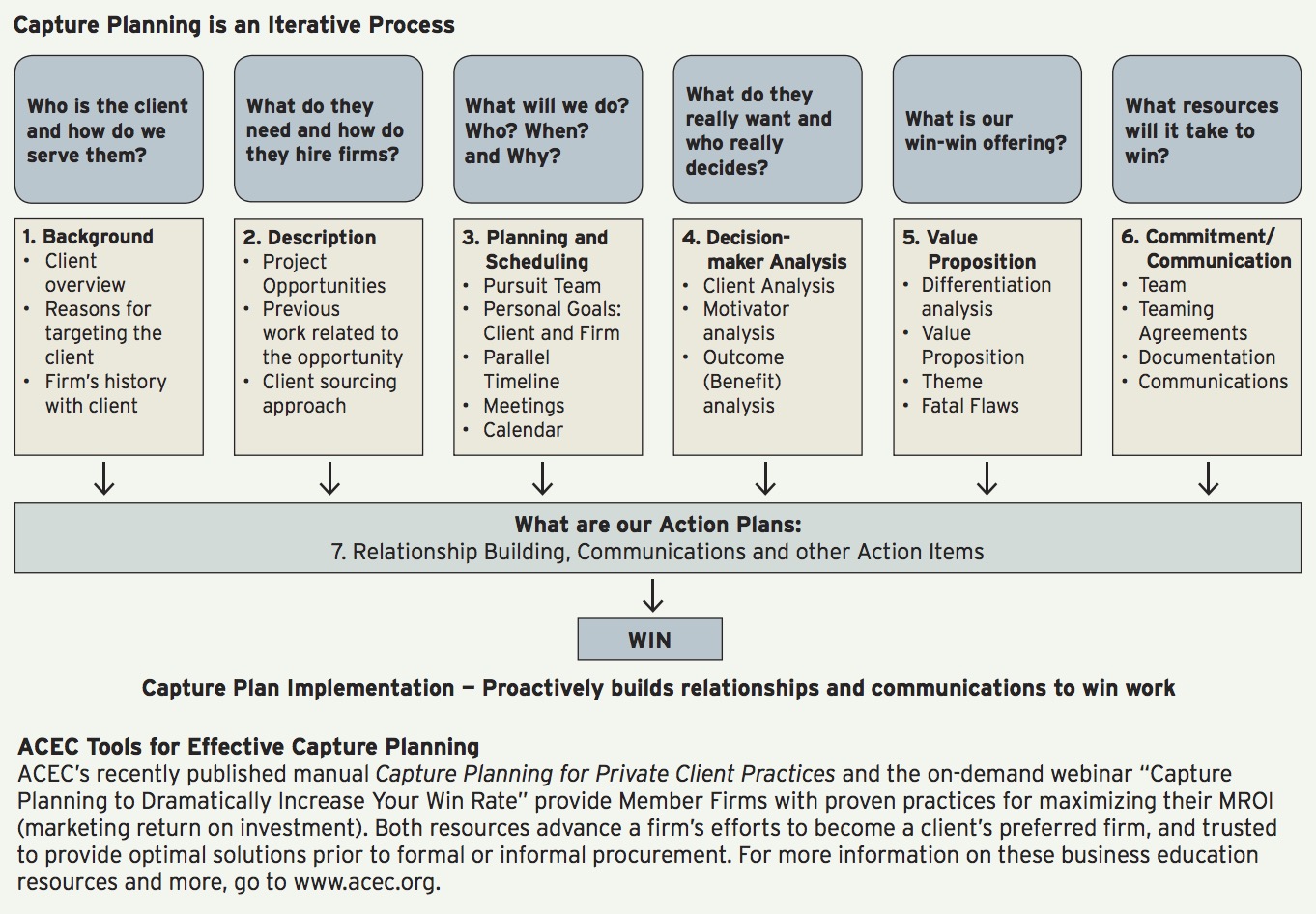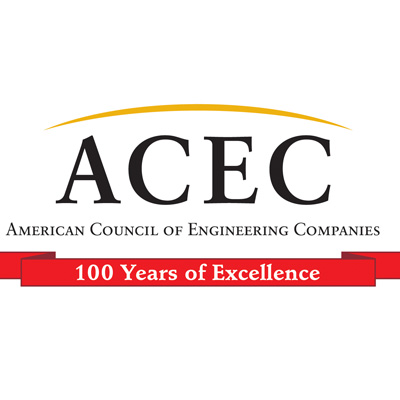AMERICAN COUNCIL OF ENGINEERING COMPANIES (ACEC)
ACEC Member Firms incorporate several different approaches to this best practice
By Bob Woods
 By the time the RFP came out from the Hillsborough County Aviation Authority in 2013, requesting bids from design-build teams to lead the design and construction of a consolidated rental car center and automated people mover at Tampa International Airport, the team at Gresham, Smith & Partners (GS&P), Nashville, Tennessee, was prepared to submit its proposal. The reason, says Al Pramuk, a GS&P principal and its chief strategy officer, was Way-2-Win, the firm’s proprietary capture-planning process.
By the time the RFP came out from the Hillsborough County Aviation Authority in 2013, requesting bids from design-build teams to lead the design and construction of a consolidated rental car center and automated people mover at Tampa International Airport, the team at Gresham, Smith & Partners (GS&P), Nashville, Tennessee, was prepared to submit its proposal. The reason, says Al Pramuk, a GS&P principal and its chief strategy officer, was Way-2-Win, the firm’s proprietary capture-planning process.
“We’ve been working with the airport authority on various projects for more than 12 years, so we have good, solid relationships as a trusted adviser,” Pramuk says. Several months before the RFP was issued for the 2.6-million-square-foot, $730 million project, GS&P had already begun familiarizing themselves with the airport master plan “to understand the challenges to implementing the program,” he adds.
Simultaneously, GS&P was talking with several potential teaming partners who had the expertise it would take to successfully execute the large, complex program.
The team with GS&P won the work, and GS&P is the lead design manager for the multi-firm design-build team, as well as the architect of record for the people-mover infrastructure and three transit stations. The project is on track for completion in October 2017.
Capture planning, which may go by different names at different engineering firms, initially gained popularity in the public sector in the 1990s. Over the past 20 years, it has emerged as a best practice for both public and private sector business development. Essentially, it’s the process of proactively identifying or creating client and project opportunities, assessing the business environment and implementing strategies to win or “capture” business opportunities. Capture planning takes on various guises, but it’s all about leading to success.
Way-2-Win, implemented in 2010, is actually GS&P’s latest variation of the practice, says Pramuk, who’s been with the nearly 50-year-old firm for 26 years. “We wanted to have a more disciplined approach,” he says, comparing the most recent iteration with GS&P’s previous capture planning program.
“Way-2-Win includes a sales approach focused on listening and developing ideas, from the client’s mindset, and coming up with transformational solutions,” Pramuk adds. “If we listen to clients in the proper ways and gather the right information, that allows us to put together better proposals more aligned with our client’s needs.”
Doing things more efficiently is one of the strategic goals of capture planning at Detroit, Michigan-based Wade Trim, says Tom Brzezinski, chief development officer. Wade Trim formalized the practice nearly a decade ago—though, he adds, the firm did it informally before then—and updated the program last year.
“Coming out of the economic downturn, everybody is looking to be more efficient,” Brzezinski says. “You only want to spend so much to chase work, so the smarter you chase it, the cheaper it usually is, and your return on investment should increase.”

To ensure its aim is true, Wade Trim developed a training process focused on capture planning, and it expanded that process this year. “Business development doesn’t include just a handful of people. It includes everybody in the company,” Brzezinski says. “We’ve gone from training only the management team to now including some senior project managers.” The firm conducts monthly project manager training, shifting topics from project delivery to managing clients to business development, he adds.
Fostering relationships among a growing list of clients and meeting their needs have been the focus for Omaha, Nebraska-based HDR since it began using capture planning more than 18 years ago, says Nancy Gruwell, vice president of marketing. While HDR develops capture plans around specific projects—especially large, strategic pursuits—the firm generally looks at client organizations as a whole, plus the types of engineering design and consulting services they’re going to need five, 10, even 20 years down the road.
“Capture planning is really positioning ourselves for projects, so when we start with a client development plan, a capture plan might roll out of that,” Gruwell says. “It’s an ongoing mindset about what challenges our clients might be facing, such as new regulations they have to deal with. Many times, those discussions can happen without a particular project in mind, but knowing that eventually there’s going to be a need.”
A particular project demanded a capture plan when HDR pursued the contract to provide design and construction support services for the 1,900-footlong Mike O’Callaghan–Pat Tillman Memorial Bridge spanning the Colorado River, also known as the Hoover Dam Bypass, which rerouted traffic over the top of the Hoover Dam. HDR prepared its capture plan well in advance of the RFP, issued by a division of the Federal Highway Administration, and was ultimately named to lead an integrated group of firms collectively known as the Hoover Support Team.
Download full article (PDF): Capture Planning Paves the Way to Winning
 About the American Council of Engineering Companies
About the American Council of Engineering Companies
www.acec.org
The American Council of Engineering Companies (ACEC) is the voice of America’s engineering industry. Council members – numbering more than 5,000 firms representing more than 500,000 employees throughout the country – are engaged in a wide range of engineering works that propel the nation’s economy, and enhance and safeguard America’s quality of life. These works allow Americans to drink clean water, enjoy a healthy life, take advantage of new technologies, and travel safely and efficiently. The Council’s mission is to contribute to America’s prosperity and welfare by advancing the business interests of member firms.
Tags: ACEC, American Council of Engineering Companies, Bob Woods, Capture planning, Engineering Inc.






 RSS Feed
RSS Feed